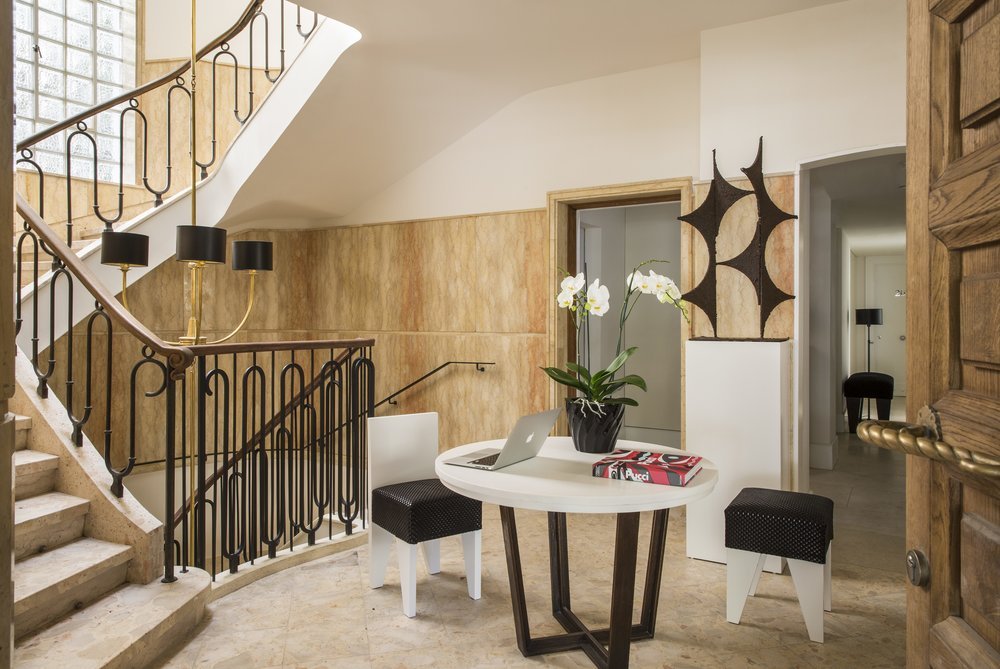#3878. Elegant Symbiosis: Traditional Materials and Contemporary Forms in a Two-Level Country House Foyer

This elegant two-level entrance area presents a harmonious blend of traditional and contemporary design elements. The space is organized around a majestic staircase with exquisite wrought iron railings, featuring repeating oval elements that create a rhythmic visual effect. The finishing materials showcase a noble palette: marble steps in warm sandy tones complement the natural stone panels on the walls, giving the space a sense of solidity and luxury.
At the center of the composition is a modern round table with a geometric base, featuring a contrasting combination of a white tabletop and dark frame. Minimalist stools with textured upholstery complete the ensemble, striking a balance between functionality and aesthetics. The designer has skillfully integrated elements of a modern workspace – a laptop and books are organically placed on the table, demonstrating that even a formal space can be functional.
Lighting plays a key role in creating the atmosphere – an elegant chandelier with black lampshades and gold elements adds a note of restrained luxury. A decorative panel with geometric patterns serves as an accent, adding artistic character and visual depth to the room. A live orchid in a dark planter brings natural elegance and enlivens the space.
The massive wooden door with a textured surface and original gold hardware becomes not only a functional element but also an important decorative accent, emphasizing the prestigious nature of the dwelling. When designing the facade of a country house, similar attention to details and materials allows for creating a harmonious transition between exterior and interior, which is a key principle of a holistic architectural solution.
This interior masterfully applies the technique of combining different textures – smooth plaster, textured stone, polished wood, and forged metal – creating a multi-layered, tactilely rich space. A similar approach can be used in your own home to add depth and character even to a neutral color palette. Additionally, zoning through height differences and visually significant architectural elements, such as the staircase, allows for naturally organizing the space without using partitions.